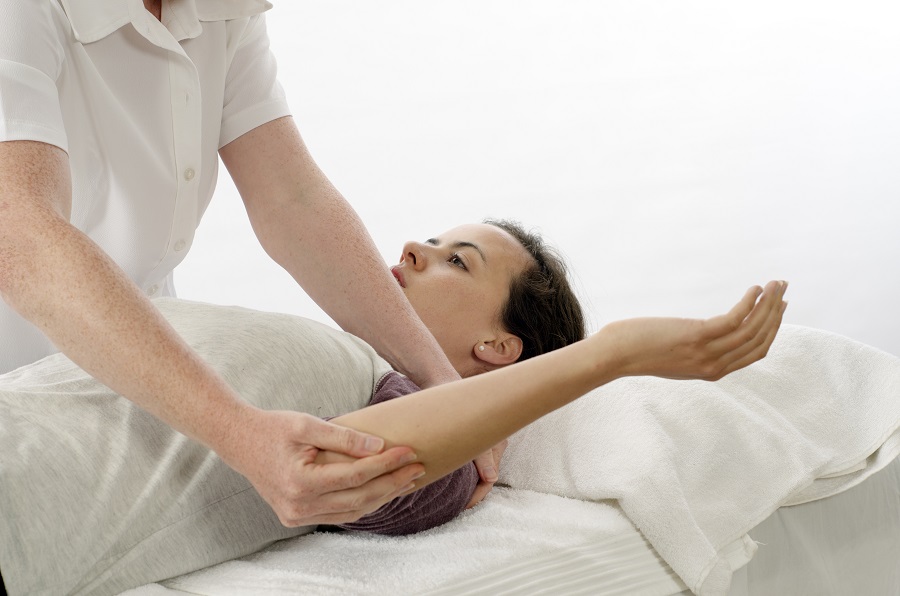Touch For Health Kinesiology

What Is Kinesiology?
Dictionaries will say that kinesiology is the study of human motion or human muscular movements and there is a branch of science called kinesiology that focuses on joint and muscle movement, but what I refer to here is a type of complimentary therapy called kinesiology. Nowadays, there are many different branches of kinesiology, but they all share common chiropractic origins and use the same basic key technique of muscle testing, where muscles (usually the arms or legs) are used to detect, monitor and correct physical, postural, structural, nutritional, mental, emotional and electrical imbalances within the body.
History of Touch For Health Kinesiology
In the 1960’s an American chiropractor named George Goodheart combined Eastern and Western ideas such as chiropractic therapy, traditional Chinese medicine, acupressure, nutrition, etc, to create Applied Kinesiology, a system using muscle testing to evaluate and correct imbalances. At the time, Applied Kinesiology was only made available to other professionals and chiropractors. In the 1970’s another chiropractor and one of Goodheart’s pioneering team of applied kinesiologists called John Thie, then created a simpler system for the non-professional public which is called Touch For Health which is part of the Kinesiology system (along with SIPS Kinesiology) available at Choice Healing where we use the same basic key kinesiological technique of muscle testing to tailor make the treatment specific to every specific client.

Muscle Testing
Muscle testing or muscle monitoring is a method of tapping into the clients’ biofeedback mechanism which lets the client’s body tell the practitioner, firstly whether and where stress is present in the body and secondly what it needs to treat the stress, allowing the innate healing powers of the body to restore balance and harmony to the system. The word stress is used here to describe any and all imbalances in the body, whether it be structural, nutritional, emotional or electrical in nature such as mental anxiety, physical pain, emotional stress, physical injuries or depression, etc. Considering the sub-conscious mind, neurology and how the brain works, it may be helpful to consider the body as being like a super computer (or a bio-computer), which stores all of the knowledge of all of the conditions present in the body. The muscle test is just a way for the practitioner to access this knowledge.
The muscle testing itself is non-invasive and involves selecting a muscle to be used as an indicator muscle, placing the muscle in a painless position to isolate the muscle, applying light pressure on the muscle and then testing the muscles’ response to the light pressure. Then, we test the muscle under light pressure in response to stimulus, such as thinking of a particular stress, asking verbal questions or in response to specific finger modes (specific finger positions) and we look for the response or change of response of the indicator muscle. If there is no stress present in response to the stimulus, the indicator muscle will remain strong (known as locking). If there is stress present in response to the stimulus, the indicator muscle will give way or go weak (also known as unlocking). These responses are quite subtle but can be felt by both the client and the practitioner.
Throughout the session, these responses can be used to denote a yes (locking) or no (unlocking) answer to the systematic questioning of the practitioner to establish what is going on in terms of the imbalance and and what specific treatment or technique available to the practitioner will be used to restore harmony to the body. This does not qualify as a diagnosis, merely an assessment of the stress and remedial treatment or technique as advised by the clients’ body.
Basis and Applications of Touch For Health Kinesiology
The real focus of Touch For Health at Choice Healing is to balance the potential of a person in all aspects of their life. Even as a practitioner I am still fascinated by this modality, how the client’s body tells the practitioner what is the cause of the imbalance and what it needs, accross all aspects of the client’s physical, emotional, mental and spiritual self and in all aspects of their lives. One of the greatest attributes of Touch For Health Kinesiology is its versatility in application as it can be used successfully to help support the client in the treatment of virtually all types of situations, problems, issues and goals. It is also fascinating that even when treating people with identical problems and symptoms, no two treatments are alike as no two people are the same, the client’s individual muscle testing response will ensure that the treatment be tailor made specifically for the individual client concerned. It’s applications and scope of treatment are as wide as the imagination, some can be generalised under the folloing headings:
Pain
Whether it be described as physical, emotional or mental in nature or origin, pain is an aspect of the human condition and can affect many peoples lives. Structural pain such as backache, pulled muscle, pain from bad posture can also affetc us chronically or acutely. Touch For health Kinesiology can help in pain relief by clearing energy blockages, stimulating the innate healing powers of the body to restore balance and harmony to the system and bringing harmony to the body. This can also help correct postural issues by balancing muscles and the flow of energy through the clients energy meridian system.
Stress
The word stress has been used to describe any and all imbalances in the body, whether it be structural, nutritional, emotional or electrical in nature such as mental anxiety, physical pain, emotional stress, physical injuries or depression, etc. Stress can also be a word to describe everyday situations that we find hard to deal with and we can experience stress in a cumulative way over long periods of time too. We all experience stress and we all handle stress differently. My own personal opinion is that sometimes stress is like an iceberg, we may think that we are handling stress on and above the surface, but beneath the surface of our being there can be more to the stress than we are aware of. When we don’t deal with the underlying stress, the energy imprint of stress can store in the body and can manifest physically as discomfort and dis-ease in many different forms, such as stomach problems (e.g., indigestion or stomach ulcers). Kinesiology techniques can be applied to effectively deal with all kinds of stress and in all kinds of people. It can help with stress from past experiences, current challenges, fears and phobias and even in preparation for future potentially stressful events such as interviews and exams.
At Choice Healing I also apply a kinesiology discipline called SIPS (Stress Indicator Point System) which explores the relationship between the state of the subtle enregy systems of the client and electrical structure of the cells of the clients’ physical body, uncovering links between stress, our resistance to healing and the Universal Law of Electrical Energy. This can help reduce pain in body tissues and joints.
Nutrition
The necessity for a balanced and healthy diet in our lives is well known and for some can be easily maintained, for others not so easy. In addition to this we also may not be aware of the toxins ingested by our bodies such as from the environment or in our foods. We can use Kinesiology techniques to determine the body’s sensitivity to foods and common allergens and also muscle test to establish better nutrition in terms of the clients diet including supplement programmes if necessary.
Achieving Goals and Balancing Potential
Kinesiology has also been used to help the client in realising a more balanced path in life by establishing new goals that are more alligned with the client’s life purpose, clearing their resistance to achieving them and in general balancing the clients’ potential in all aspects of their life.
What to expect during a session:
The first thing that a practitioner will do does is take a case history. The accuracy of the muscle testing is important so if you are being muscle tested for the first time then the practitioner will talk you through and teach you about the indicator muscle positions, the range of motion, the amount of pressue and how long the light pressure will be applied. After some prechecks the practitioner will ask you to establish a positive goal for the session (also called a balance) and then begin muscle testing. After that, your body will dictate what happens next, i.e., what will be necessary for the balance. This can range from muscle balancing using lymphatic drainage, neurovacular holding points, rubbing reflexes, emotianal stress release hand positions. It may include the use of homeopathic remedies, flower remedies, essence sprays, thinking about something stressful issues, repeating affirmations or bringing supplements and nutritional support into the aura of the client. It may also include short bursts or full sessions of all of the modalities that the practitioner has available, i.e., Reiki, Crystal Healing, Integrated Energy Therapy, etc. The muscle testing and your body’s response will dictate the whole session until the balance for that particular session is complete.
Muscle testing and your body’s response can also dictate the frequency, timing and volume of future treatments, if more are necessary.
